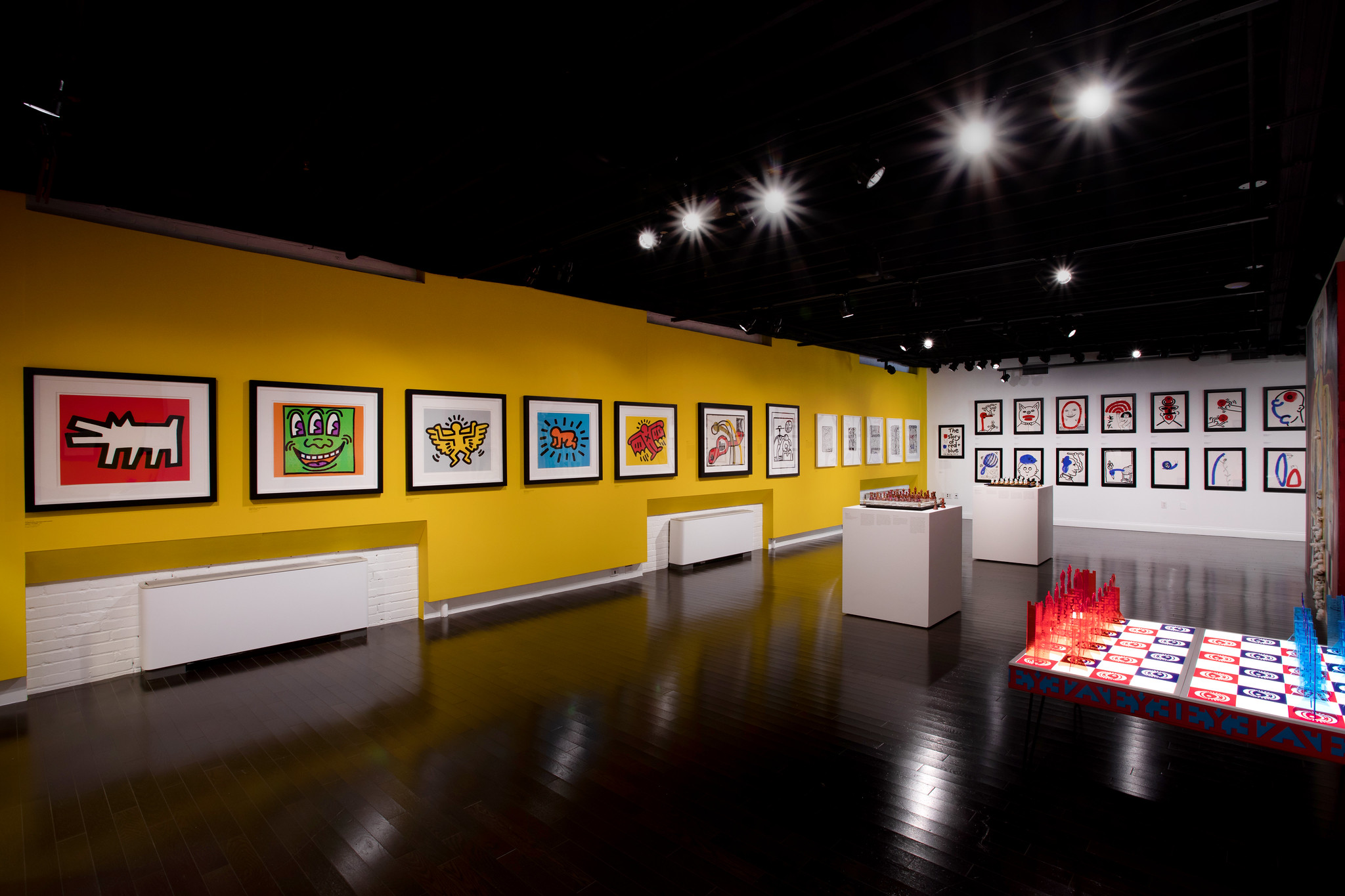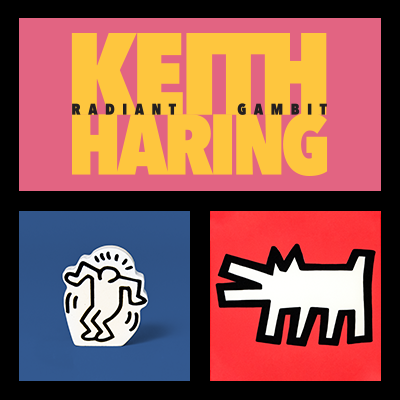—Brittany Mosier
Keith Haring’s insatiable curiosity made him an avid reader, and his literary explorations informed his lifelong philosophies. Haring valued reading so much that he contributed to many children’s books and donated his time and artwork to causes that encourage youth literacy. Many wonderful books written about Haring’s life or featuring his work can be found with a quick search, but we at the World Chess Hall of Fame gathered a less-obvious list of works that influenced Haring’s life, views, and friendships.
1. Robert Henri, The Art Spirit, 1923:
This iconic work by realist painter Robert Henri that urges the reader to “do whatever you do intensely” is a cornerstone piece of literature for generations of artists. In addition to Haring, some artists who cite this as a favorite include Georgia O’Keeffe, David Lynch, and George Bellows. Matthew Burgess, Haring’s college roommate, recalled that Haring “felt as if the book was speaking directly to him.”
2. Raphael Bouvier, Andreas Franzske, Catherine Iselin, Florence Queneau, Jean Dubuffet, Jean Dubuffet: Metamorphoses of Landscape, 2016
Haring identified with Jean Dubuffet’s energetic artwork and progressive philosophies. He reflected in his journals: "Jean DuBuffet delivered a speech at the Art Institute of Chicago that clearly explains the misconception of beauty embraced by the Western Culture. This speech, which I discovered in 1977 in Pittsburgh, I have read and re-read, and it is one of my favorite things written by another artist. This text and Robert Henri's The Art Spirit are the literary references in my philosophy."
3. Andy Warhol, The Philosophy of Andy Warol, 1975:
Andy Warhol was a friend, collaborator, and source of endless inspiration to Haring. In a 1987 journal entry, Haring wrote, “I will always acknowledge my debt to him. The biggest honor was the support and endorsement he bestowed upon me. By mere association he showed his support. He set the precedent for my venture into the commercial world and the popular culture. He is the validation for a kind of “seriousness” or “realness” that is balanced on the tightrope I am walking between ‘high’ and ‘low’ art. His support made me oblivious to the critic vultures waiting for a wrong move and anxiously anticipated fall.”
4. William S. Burroughs, Naked Lunch, 1959:
Naked Lunch, “the Bible for the east village aesthetic and free-flowing ‘cut-ups,’” became a meaningful work for Haring around the time he moved to New York City. Haring met Burroughs through the city’s art scene, and his hero soon became his peer. They collaborated on various projects, including The Valley, a series of etchings inspired by Burrough’s writing, which is currently on view as part of Keith Haring: Radiant Gambit at the World Chess Hall of Fame.
5. Brion Gysin, The Process, 1969
“I feel honoured to have known Brion and shared a short but timeless moment of our lives. He was my teacher, a role he took on with great passion. Perhaps the greatest teacher I will ever have, for he taught by example,” Haring said of the artist and writer.
6. Pierre Alechinsky, Paintings and Writings, 1977
Haring felt such a connection to Pierre Alechinsky’s work that he was compelled to explore his writings as well. When explaining his introduction to Alechinsky’s work, Haring said, “I went to that exhibit I don’t know how many times. I bought the catalog, I read Alechinsky’s writing. I watched the videos of him painting these enormous canvases on the floor! Alechinsky blew me away. From that point on, it changed everything for me.”
7. Timothy Leary, Flashbacks, 1983
Timothy Leary, a psychologist and psychedelic writer, shared a far-out connection with Haring. When introduced by mutual friend Grace Jones, they instantly saw something of themselves in one another. Haring recalled relating to Leary's writing, “To me, Leary was this mythical figure, a kind of guru of the sixties. When we met, he gave me a copy of his autobiography, Flashback, which I took with me to Europe... I start reading Leary’s book. I’m completely overwhelmed and practically freak out.” Leary reflected on the similarities between the two, “Keith and I… we’re mutants. We’ve been swept away by the waves of the twentieth century into the 21st century. There are a few of us up there who are moving in the direction that our species will take in the next century. And there are poets and writers and painters, and millions of people who understand what we’re doing. But what are we doing?”
8. Carl Jung, Man and his Symbols, 1964
“By the beginning of 1979, Haring was writing of an immensely active New York, reading enormously - William S. Burroughs, a particular hero, but also Gertrude Stein and John Cage, voraciously Vincent Van Gogh's letters, Paul Klee's diaries, works by Wassily Kandinsky, Carl Jung, Fernand Leger. John Keats from 1817 and 1818. Music, dance, poetry were also important. He was an insatiable autodidact.” -Baltimore Sun
We can imagine that Carl Jung would be a fan of Haring’s work, with his deep appreciation of archetypes as a tool for expression of the human psyche.
9. Maya Angelou, Life Doesn't Frighten Me, 1993
Maya Angelou’s inspiring poem Life Doesn’t Frighten Me is illustrated by the works of Jean-Michel Basquiat. Basquiat, who Haring deemed as “the King of painting,” was a dear friend and collaborator to Haring. This poem intended to empower children aligns with Haring’s messages of fearlessness and positivity.
10. Charles Schultz, Peanuts Treasury, 1968
It is easy to see similarities between the work of Keith Haring and Charles Schultz. Both prolific artists created worlds of their own with singular styles of linework and compassionate themes. Their work appealed to the masses while maintaining heart and integrity. Haring recalled, “I liked the early Charles Schultz, when he first came out with Charlie Brown. I used to collect all those comics.”

This sampling of iconic literature can help form a map of Haring’s inspirations. From the wit of Burroughs to the progressive theories by John DuBuffet, the connection between his taste in literature and his work are apparent. See Haring’s work in-person at the World Chess Hall of Fame. Keith Haring: Radiant Gambit is on view through May 16, 2021.
A virtual tour of the exhibition is available on the World Chess Hall of Fame’s YouTube channel.
Brittany Mosier is the Program Coordinator and Curatorial assistant at the World Chess Hall of Fame. She is also an artist, illustrator, and music video historian in her spare time. You can find her work at brittanyboynton.com

